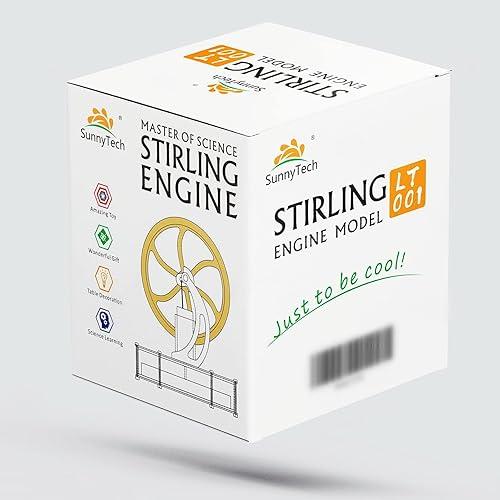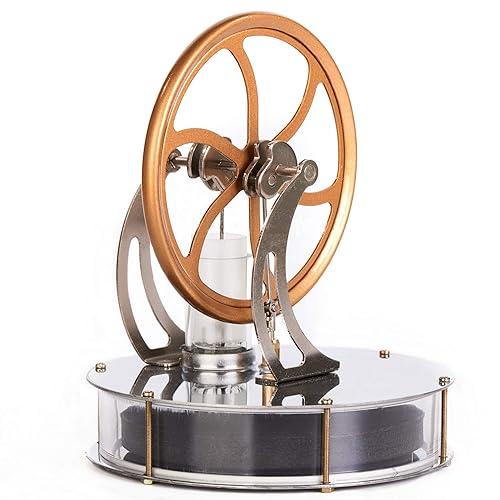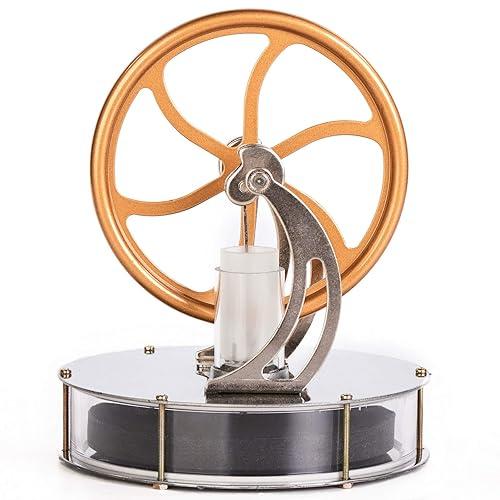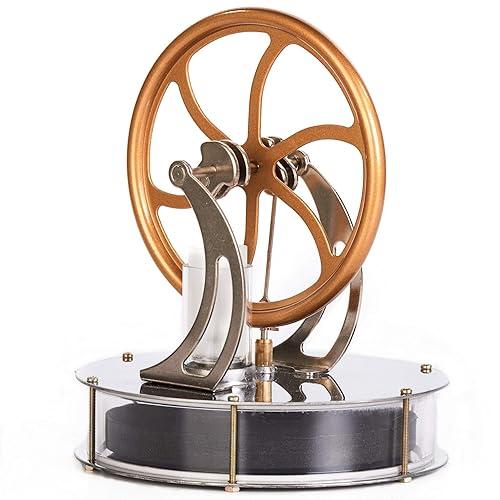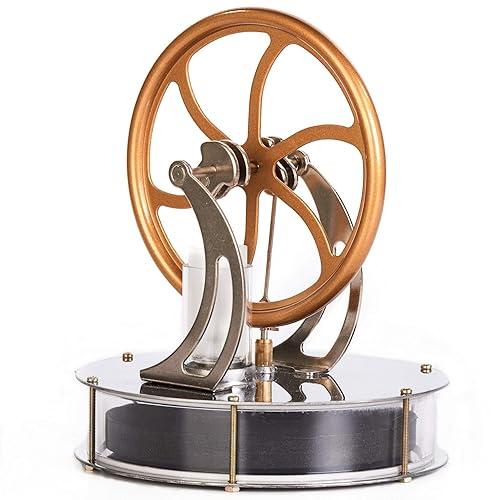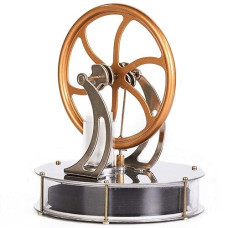Sunnytech Low Temp Stirling Engine Model Toy Kit - LT001
US Delivery Time: 3-5 Business Days.
Outside US Delivery Time: 8-12 Business Days.
Discover the innovative Sunnytech Low Temperature Stirling Engine, a remarkable addition to your educational tools or gift options. This multicolor marvel not only captivates but also demonstrates scientific principles in an engaging way. - **Compact Design**: Measuring 3.93 x 3.93 x 4.72 inches, its small footprint makes it easy to display and use in various settings. - **Versatile Usage**: Perfect for both hot water and cold ice, this engine operates efficiently, making it a fantastic demonstration of thermodynamics. - **Educational Tool**: Ideal for teaching purposes, it provides hands-on learning about heat energy conversion, making science fun and accessible. - **Unique Gift Idea**: Delight your friends and family with a one-of-a-kind gift that sparks curiosity and encourages exploration of scientific concepts. - **Quality Brand**: Manufactured by Sunnytech®, known for its commitment to excellence and innovation in educational products. Elevate your learning experience or surprise a loved one with this fantastic Stirling engine that combines fun, education, and creativity in one unique package.
Discover the Magic of the Sunnytech Stirling Engine!
Experience the fascinating world of thermodynamics with the Sunnytech Stirling Engine, a unique educational toy that demonstrates the principles of heat energy conversion. This meticulously designed engine operates with a stunning speed of 180-200 RPM and showcases the incredible efficiency of external combustion engines. Whether you're looking for an engaging gift for friends and family or a captivating teaching tool, this Stirling engine is the perfect choice.
Key Features:
- High Performance: Speed of up to 180-200 RPM.
- Temperature Differential: Operates effectively with a temperature difference of just 20°C.
- Sturdy Construction: Made from high-quality steel and glass, ensuring durability and longevity.
- Compact Size: Dimensions of 100X100X140mm, making it suitable for any workspace or classroom.
- Lightweight: Weighs only 250g, easy to transport and display.
- Colorful Design: Features a striking silver bottom with a gold flywheel, adding an aesthetic touch to any setting.
- Educational Tool: Ideal for teaching physics concepts and demonstrating energy conversion.
- Versatile Use: Can be operated on hot water or ice, providing a hands-on learning experience.
Real-World Applications:
The Sunnytech Stirling Engine is not just a toy; it's a powerful educational tool that can ignite curiosity in students of all ages. Perfect for science fairs, classrooms, or even as a captivating conversation piece at home, this engine showcases the principles of thermodynamics in action. Watch as it effortlessly transforms heat energy into mechanical work, providing a visual and interactive learning experience.
Usage Scenarios:
- Home Decor: Place the engine on a shelf or desk to spark interest and conversation.
- Educational Demonstrations: Use it in classrooms to illustrate scientific concepts in a tangible way.
- Gift Idea: A thoughtful gift for science enthusiasts, students, or anyone interested in engineering.
Attention:
To ensure optimal performance, please follow these guidelines: If you notice a slight noise, apply a small amount of graphite dry lube to quiet it down. Avoid using oil, as it can mix with dust, leading to increased friction and preventing the engine from running smoothly.
Order Your Sunnytech Stirling Engine Today!
Unleash the power of science and creativity with this amazing Stirling engine. Its unique design and educational benefits make it a must-have for anyone interested in the wonders of physics and engineering. Don’t miss out on the opportunity to inspire and educate—purchase the Sunnytech Stirling Engine today!
 Warning - California Proposition 65
Warning - California Proposition 65 This product may contain chemicals known to the State of California to cause cancer, birth defects, or other reproductive harm.
Reviews (0)
Product FAQs
Q: What is the Stirling engine and how does it work?
Ans: A Stirling engine is a heat engine that operates by cyclic compression and expansion of air or other gases, converting heat energy into mechanical work. It uses a fixed quantity of gas like air or helium, allowing it to run efficiently by compressing cool gas, heating it, expanding the hot gas, and cooling it before repeating the cycle.
Q: What materials are used in the Stirling engine model?
Ans: The Stirlingtech Low Temperature Stirling Engine is made from high-quality alloy steel and glass, ensuring durability and a sleek design.
Q: What makes this Stirling engine a great educational tool?
Ans: This model serves as an excellent educational tool by demonstrating principles of thermodynamics and heat engines in a hands-on manner, making it perfect for teaching purposes.
Q: How can I achieve the temperature difference needed to operate the engine?
Ans: You can operate the Stirling engine by placing it on top of hot water to create a temperature difference or on ice for cooling. This allows the engine to function effectively.
Q: Is the Stirling engine noisy during operation?
Ans: Some noise may occur during operation. If this happens, using a small amount of graphite dry lubricant can help reduce noise without causing damage.
Q: Can I use oil for lubrication on the Stirling engine?
Ans: No, it is prohibited to use oil for lubrication as it can mix with dust and create an oil-dirt that increases friction, preventing the engine from running smoothly.
Q: What are the dimensions and weight of the Stirling engine model?
Ans: The Stirlingtech Low Temperature Stirling Engine measures 100 x 100 x 140 mm and weighs 250g, making it a compact and portable educational model.
Q: Is this product suitable as a gift?
Ans: Yes, this Stirling engine model is a fantastic gift for friends, family, students, or anyone interested in science and engineering, combining fun with education.
Q: What is the maximum speed of the Stirling engine?
Ans: The Stirling engine can reach speeds of up to 180-200 RPM, demonstrating impressive performance for a low-temperature engine model.
Q: What colors are available for this product?
Ans: The Stirling engine features a silver bottom and a gold flywheel, offering an attractive aesthetic that complements its functionality.


